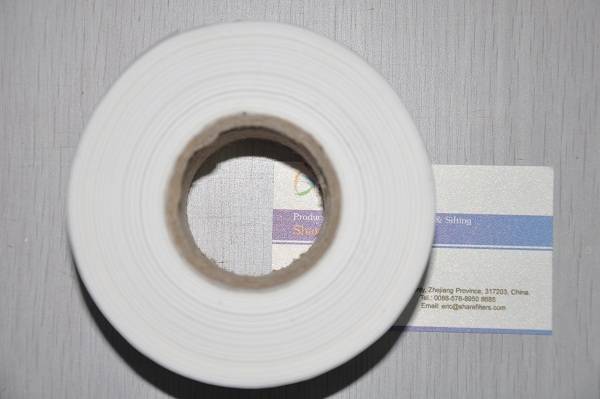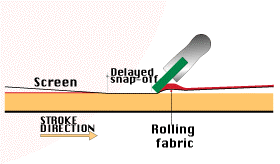Company Blog
Products for Filtration, Separation, Sifting and Printing
Printer Guidebook---Screen Mesh 5
- Font size: Larger Smaller
- Hits: 7648
- Subscribe to this entry
- Bookmark

Mesh tension: A measure of mesh deflection expressed in terms of Newtons per centimeter (N/cm).
Tension should be looked at in two ways: the initial stretching and re-tensioning of mesh on your frames, and the ways in which tension interacts with other variables during printing. It's difficult to understand its dynamics without looking at tension relative to off-contact distance and squeegee-blade pressure, so be sure to visit those variables after you've read about this one.
The twofold job of mesh tension is to provide resistance for the blade-to be overcome only at the point where the blade forces mesh-to-substrate contact-and to pull the mesh out of the ink film after the blade passes.
 Among mesh tension's various jobs are to provide resistance to the squeegee blade, to pull the mesh out of the ink immediately following the print stroke and to prevent mesh from rolling in front of the blade.
Among mesh tension's various jobs are to provide resistance to the squeegee blade, to pull the mesh out of the ink immediately following the print stroke and to prevent mesh from rolling in front of the blade.
Mesh tension is a measure of deflection expressed in Newtons per centimeter (N/cm). Until mesh stabilizes from continuously pulling the blade across it (orienting the molecular structure), it is unpredictable and unstable because of what's known as cold flow (the relaxing of the polyester molecules). This constant change can be very frustrating, especially to printers who don't use a tension meter.
Under-stretched
Tension of about 20 N/cm is an average minimum for mesh tension. Below 20 Newtons, the blade tends to over-manipulate the mesh, rolling it and dragging it in front of the stroke.
And, as the mesh moves, it smears the ink film and blurs the image. Ink also picks up on the bottom of the screens when they're not adequately tensioned. What's more, because the mesh is moving, registration becomes impossible.
Over-stretched
When polyester is overstretched-from both excessive screen tensioning and overcoming excessive off-contact with the squeegee blade-the plastic deforms and it won't return to the neutral position required for good registration. The mesh will also fatigue faster and will lose tension faster than normal. You can also overstretch a mesh so much that it will rip. This is usually caused by tension concentrated in the corners where the fibers act as if they were shorter because of their heat set intersections. This corner concentration makes these fibers approach their breaking point faster than fibers in the center of the screen, and they rip. All screen makers should soften the corner fabric (utilizing longer fiber lengths) to prevent such damage.
Mesh tension during stretching is limited by the thread diameter of the mesh, as well as how many of them there are per nch or per centimeter
Low-elongation (LE) fibers have been treated during manufacture and are able to be stretched to higher initial tensions. This is a great benefit to stretch-and-glue screens because they can match the initial tensions of retensionable frames. Still, they will not be able to be retensioned during the life of the mesh, as the fibers elongate during printing.
Retensionable frames can take advantage of the stabilization of the mesh through molecular orientation and retensioning, as well as recycle what might otherwise be unusable mesh. (In fact, such recycled, mature mesh is often more valuable than virgin mesh, fresh off the bolt.)
On the press
Once the screen is on the press, off-contact and blade pressure add still more stress to the screen. Engineers call this dynamic tension, static tension being tension without a squeegee-blade load.
What's the relationship between off-contact and mesh tension? It is that printers typically compensate for inadequate tension with excessive off-contact. The result is that more blade pressure is required (essentially calling on the blade to perform as a tensioning device). On automatic equipment, a few turns of a knob adds more pressure, but it costs you registration, production time, and stencil life. For the poor manual printer, with tired wrists, less pressure is the most important requirement for sanity and health; the best way to avoid excessive pressure is to achieve adequate mesh tension.
A low-tension screen doesn't provide resistance to the blade. Since you're already touching the shirt with the screen, you must use extra pressure just to get the ink to transfer. This works, but causes inferior prints.
With textiles, too much pressure drives the ink right through the shirt and onto the platen. Whatever the force between mesh and blade, it isn't necessarily transmitted to the shirt. The force of the mesh must be enough to pull it back out of the ink; the blade pressure, though, needs to be only enough to cause the mesh to "kiss" the substrate.
Last modified on


